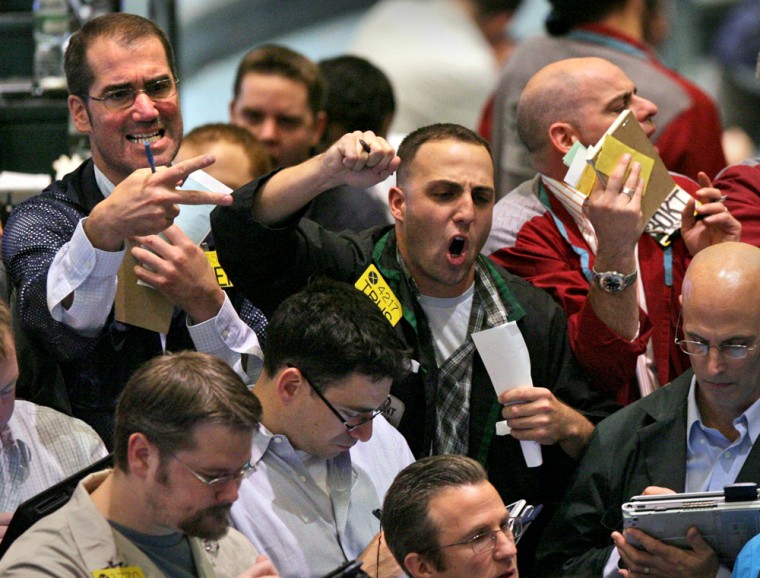As oil prices zoomed toward an unheard of $147 a barrel this summer, it seemed every analyst prediction that oil would approach $200 was a self-fulfilling prophecy, until suddenly it was not.
Instead of $200 oil, oil is now $80. Instead of going up, U.S. demand has fallen at the steepest rate since the oil-shocked 1970s. Americans have dramatically cut down on driving over the past year.
Soaring prices for oil and other commodities this summer have turned out to be nothing short of another classic bubble, and the bursting may not be over, one analyst said Monday.
"It's just amazing that the market gets suckered into this," said analyst Stephen Schork of the Schork Report, who called the idea of $150 a barrel oil "an obscene number, a perverted, illogical number."
On Monday, Goldman Sachs, among those predicting $200-a-barrel oil, cut its year-end forecast of oil to $70 from $115 and lowered its price outlook for the end of 2009 from $107 per barrel from $125 to reflect the weak global economy.
"We clearly underestimated the depth and duration of the global financial crisis and its implications on economic growth and commodity demand," analyst Jeffrey Currie said in a report.
David Fyfe, an analyst with the International Energy Agency in Paris, was a bit less critical, avoiding the word "suckered."
"To be fair, there is always a tendency in parts of the analyst community to look at short-turn trends and assume it's something that will continue in perpetuity," he said.
He called the giant swings in prices this year "a fairly unprecedented degree of turnaround."
The prevailing sentiment was that prices would continue to rise as strong global demand was goosed by geopolitical events, such as Iran's uranium enrichment program or the prospect of an ugly guerrilla war in Nigeria.
It took very little in that atmosphere to convince oil traders that oil supply would fail to keep up.
The run-up began about a year ago as the dollar went into a free fall and speculators sold dollars to buy oil and other commodities — sending prices higher.
Then, heavy hitters such as Goldman touted long-term bullish views that oil demand was going to increase and would exceed growth in supply, creating a "buying frenzy," according to Schork. That pushed oil prices much higher even though Americans were driving less.
Prices began to break in July when the dollar bottomed out. Hedge funds and investment banks — battered by the subprime housing mess, the decline in home prices and frozen credit markets — then began to sell-off positions in commodities, Schork said.
The swoon in oil prices paused only briefly during a conflict in the oil-rich Caucasus region involving Russia, and after two massive hurricanes shut down oil production in the Gulf of Mexico for weeks.
That, Schork said, should have been a clear signal that a bubble had burst.
Schork pegged the rational price for oil at $75 to $95 per barrel, but notes that just as $147 a barrel could not be justified, prices could fall well below what they are truly worth before they stabilize.
In his report, Curie said prices could fall to as low as $50, below what some oil companies need to even break even.
But Curie and Fyfe said they still see demand remaining strong for the long term.
The swiftness and severity of the pullback in oil and other prices creates a much more unstable political environment in many of the producing countries around the world, Curie said.
"Some of the hardest hit sovereigns and companies have been commodity producers, which are highly dependent upon access to capital and were already struggling to grow capacity before recent events," Curie said, suggesting that supply may still be a concern, even when fewer people are buying.
